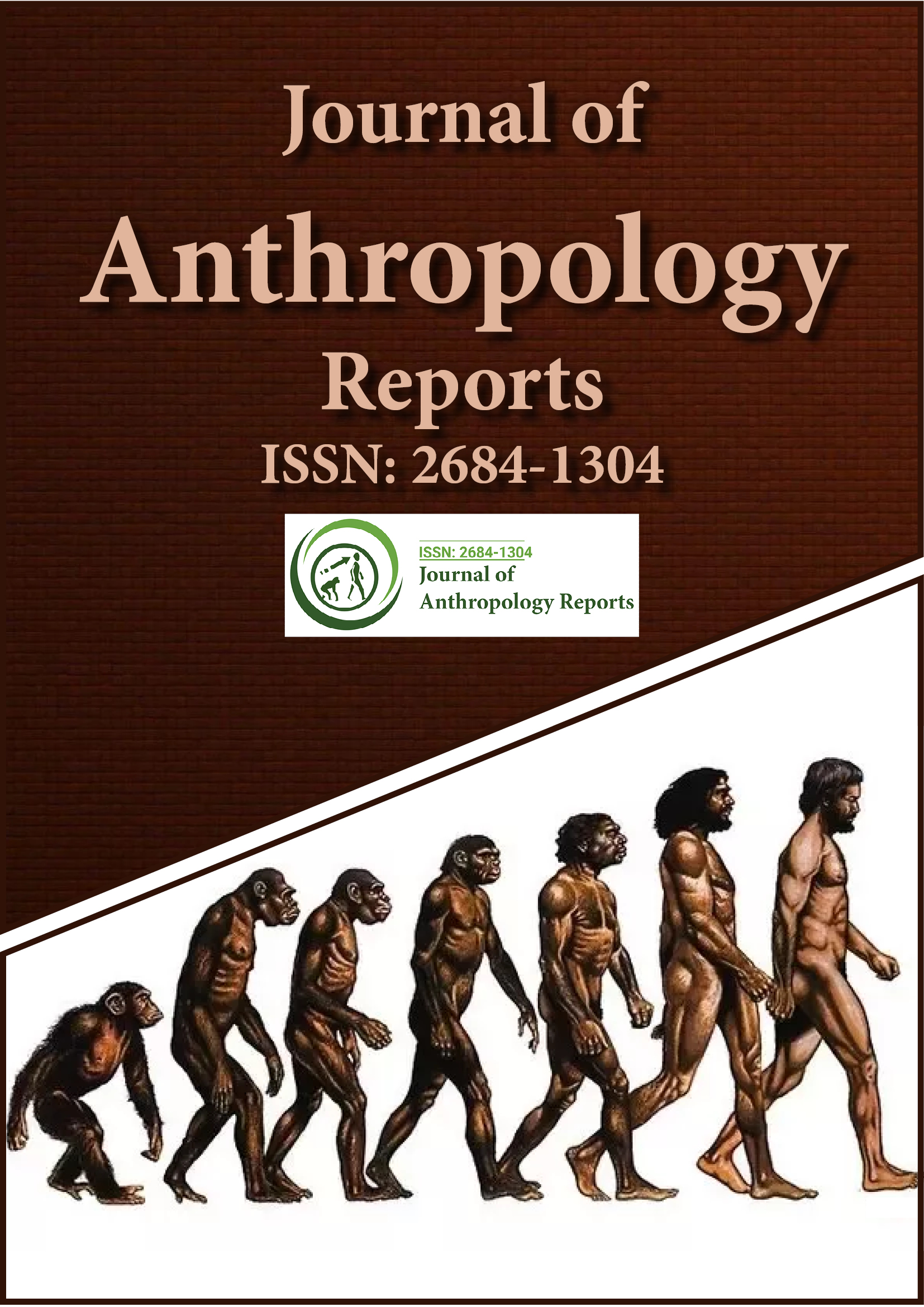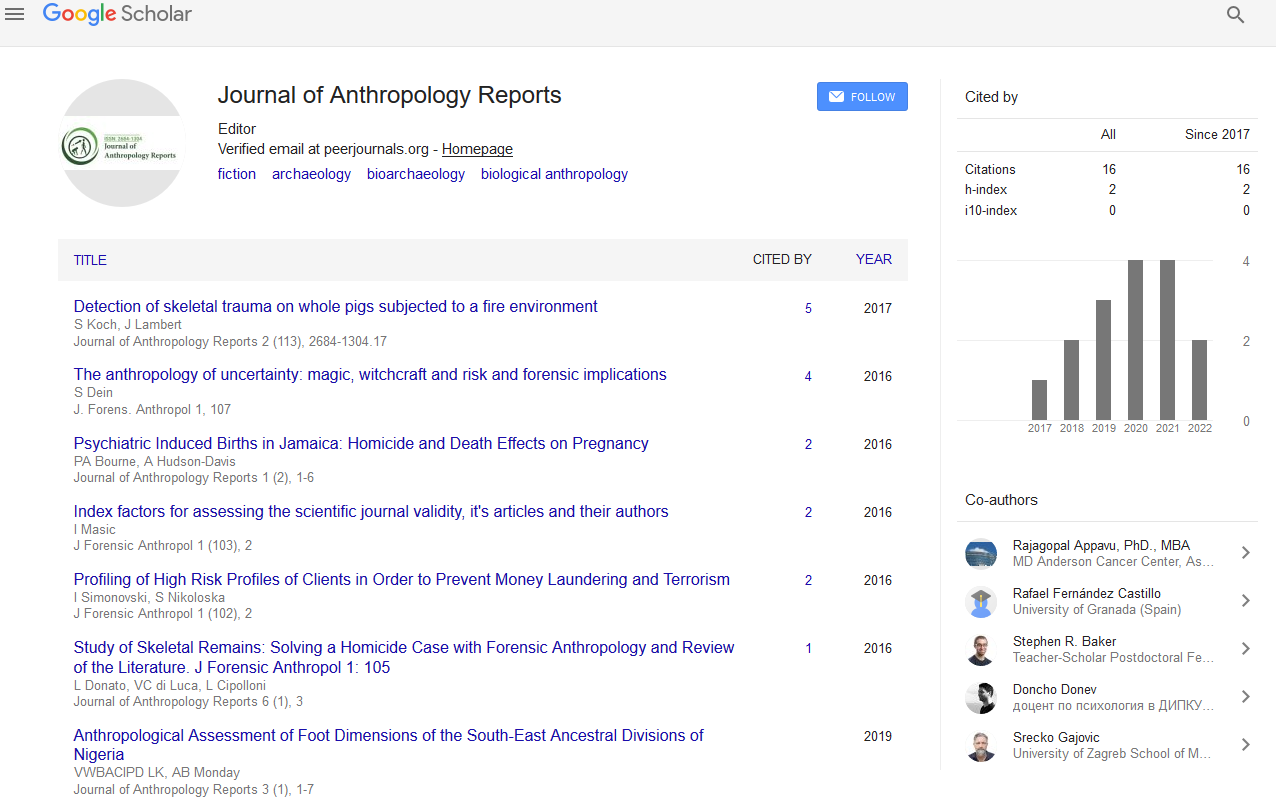Indexed In
- RefSeek
- Hamdard University
- EBSCO A-Z
Useful Links
Share This Page
Journal Flyer

Open Access Journals
- Agri and Aquaculture
- Biochemistry
- Bioinformatics & Systems Biology
- Business & Management
- Chemistry
- Clinical Sciences
- Engineering
- Food & Nutrition
- General Science
- Genetics & Molecular Biology
- Immunology & Microbiology
- Medical Sciences
- Neuroscience & Psychology
- Nursing & Health Care
- Pharmaceutical Sciences
Commentary - (2023) Volume 6, Issue 1
A Brief Note on Evolutionary Cognitive Archeology (ECA)
John Hawks*Received: 02-Feb-2023, Manuscript No. JFA-23-19682; Editor assigned: 06-Feb-2023, Pre QC No. JFA-23-19682 (PQ); Reviewed: 21-Feb-2023, QC No. JFA-23-19682 (QC); Revised: 28-Feb-2023, Manuscript No. JFA-23-19682 (R); Published: 08-Mar-2023, DOI: 10.35248/2684-1304.23.6.148
Description
Evolutionary Cognitive Archeology (ECA) is the branch of prehistoric archeology that studies the evolution of human cognition. Practikers share a methodical approach to the idea that archaeological evidence of past activity provides access to the minds of those responsible. The second field, idealized cognitive archaeology, involves archaeologists seeking to discover the meaning of symbolic systems, primarily through the analysis of iconography. This approach, unlike his ECA in its epistemology, historical roots, and citation world, focuses on a relatively recent period (10,000 years later). Evolutionary cognitive archaeologists study the nature of cognition itself and its evolutionary development from the time of the last common ancestor with chimpanzees to the final emergence of modern humans at the end of the Pleistocene. Although the ECA method is archaeological in nature, its theoretical underpinnings lie in cognitive sciences such as cognitive psychology, neuropsychology, and cognitive neuroscience. It is interdisciplinary in nature. ECA differs from the related field of evolutionary psychology in several important ways.
Methodologically, ECA is a macro evolutionary science that examines physical evidence for past human cognition, including archaeological and fossil remains. Evolutionary psychology relies heavily on reverse engineering from controlled experiments on living humans. In theory, ECA is more versatile and utilizes different cognitive and evolutionary models. Evolutionary psychology addresses a neo-Darwinian, selectionist understanding of evolutionary change. Although the two approaches tend to examine different elements of human intellectual life, they are not fundamentally contradictory. ECA experts reconstruct prehistoric activity using established archaeological methods and techniques. This includes morphological analysis of artifacts to identify plot and decision-making patterns, functional analysis (such as swarms). An increasingly important method is the realistic reproduction of prehistoric techniques for identifying unpreserved features in archaeological sites. Neuroarchaeologists enhance such realistic studies by imaging participants' brains (mainly using her fMRI). This is an approach that also contributes directly to cognitive science's understanding of the neural underpinnings of technical cognition.
ECA practitioners employ two non-mutually exclusive approaches to document human cognitive evolution. The first approach is to advance our understanding of a particular hominin taxon (i.e., Homo-his sapiens and their immediate ancestors after 6 million years) by either providing an explanation of the cognitive environment or contrasting the two taxa deepen. This approach is known to be exemplified by attempts to contrast Neanderthal abilities with those of modern humans. The second approach traces the development of specific cognitive abilities from the first appearance of stone tools 3.3 million years ago to the emergence of city-states 5,000 years ago.
Although the range of accessible cognitive abilities is limited by the nature of the archaeological site, evolutionary cognitive archaeologists are interested in spatial cognition, memory, cognitive control, technical expertise, theory of mind, aesthetic cognition, and symbolism. It sees the development of doctrines, languages, and follows arithmetic.
Conclusion
Thus, its geographic and temporal scope is vast, encompassing the full spectrum of human thought, from the first stone tools 3.3 million years ago to the emergence of human civilization some 5,000 years ago. As a method of inquiry, evolutionary cognitive archaeology emerged in the last three decades of the twentieth century, when archaeologists learned to apply distinct models of cognitive function to the material and cultural relics of hominins. Evolutionary cognitive archaeology draws its interpretive power from a variety of distinct cognitive science models, beginning to explain the elaborate mosaic of human cognitive evolution.
Citation: Hawks J (2023) A Brief Note on Evolutionary Cognitive Archeology (ECA). J Anthropol Rep. 6:148.
Copyright: © 2023 Hawks J. This is an open-access article distributed under the terms of the Creative Commons Attribution License, which permits unrestricted use, distribution, and reproduction in any medium, provided the original author and source are credited.

